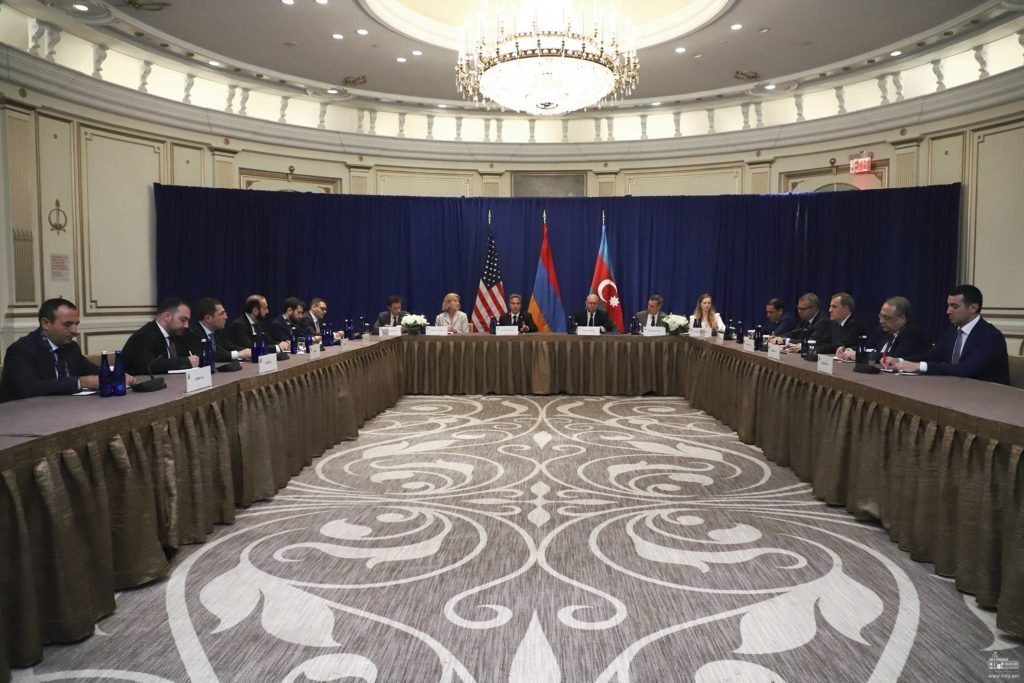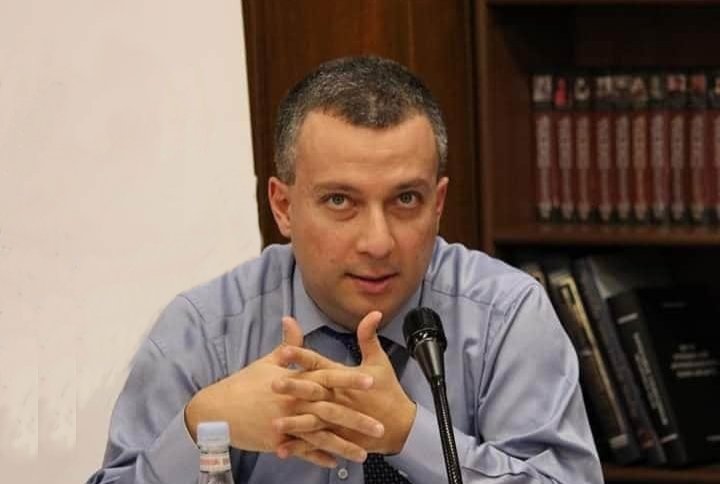
Armenia launched a wave of diplomatic activities after the latest Azerbaijani aggression. Prime Minister Nikol Pashinyan visited New York and Paris; the Armenian foreign minister met with his Azerbaijani counterpart in New York through the mediation of the US Secretary of State; the Secretary of Armenia’s Security Council Armen Grigoryan spent an entire week in Washington, where he met with President Aliyev’s top foreign policy aide Hikmet Hajiev and held discussions with several American state institutions, including a surprise visit to CIA headquarters. During these hectic movements, Pashinyan put forward the idea of deploying international observers along the Armenia-Azerbaijan border and indirectly criticized Russia for breaching signed contracts for weapons sales for which Armenia had paid. Grigoryan welcomed the US involvement in the South Caucasus, arguing for its positive effect and additional security guarantees.
On September 29, 2022, a Russian foreign ministry spokeswoman claimed that several extra-regional players sought to bring instability to the South Caucasus region. Answering a question about Pashinyan’s idea to deploy international observers along the Armenia-Azerbaijan borders, she stated that Russia stood for the full and unconditional implementation of the agreements reached by the three countries to ensure a settlement of the conflict, adding that there was a general rule not to replace what was working with something illusory. On September 30, 2022, Russian Foreign Minister Lavrov stated that discussions are underway to use CSTO observers to create favorable conditions for the realization of trilateral Armenia-Russia-Azerbaijan agreements, particularly for the delimitation and demarcation of borders.
Russia is concerned about the possibility of deploying international observers along the Armenia-Azerbaijan border, which would probably also include observers from Western countries. As the Russia-West war continues, Russia perceives the presence of Western observers as a direct step to increase their influence in the South Caucasus and weaken Russia’s position. Meanwhile, Russia understands that if the Kremlin does nothing to stop future Azerbaijani attacks, Armenia will be forced to find other solutions. Russia cannot afford direct military intervention against Azerbaijan, which may quickly transform into a Russia-Turkey military clash, opening a second front for Russia. In this context, deploying CSTO observers may create obstacles to further Azerbaijani attacks and simultaneously prevent the emergence of additional Western presence in the South Caucasus.
As several actors are involved in active diplomatic efforts after the recent Azerbaijani aggression against Armenia, and Armenia-Azerbaijan relations are slowly becoming another battlefield in the Russia-West war, the negotiations between Yerevan and Baku on the elaboration of a future peace treaty loom on the horizon. During his interview with Public TV on September 30, 2022, PM Pashinyan stated that Armenian and Azerbaijani foreign ministers would start the detailed discussion of the peace agreement. The main issue related to the peace agreement is the presence or absence of the Nagorno Karabakh issue in the text. In May 2022, the Armenian government published its six points to be included in the peace agreement. The third point said that guaranteeing the security of the Armenians of Nagorno Karabakh, respecting their rights and freedoms and determining the final status of Nagorno Karabakh were fundamental for the Armenian side. According to the Armenian perspective, a peace agreement should reference Nagorno Karabakh. Armenia and Azerbaijan should agree that the conflict has not been solved, and negotiations should work toward a solution. This option would put the future of Nagorno Karabakh in limbo, which would keep the current status quo for an unspecified period, creating favorable conditions for the extension of Russian peacekeepers’ deployment in Nagorno Karabakh after November 2025.
Azerbaijan has rejected this option, arguing that Armenia should exclude any reference to Nagorno Karabakh in the peace treaty and drop the demand for even autonomy for Nagorno Karabakh within Azerbaijan. The September 13-14 aggression was part of Azerbaijan’s coercive diplomacy strategy, signaling to Yerevan that either it should abandon Nagorno Karabakh entirely or face the prospect of losing more territories to Azerbaijan. During a September 30, 2022 interview, the Armenian Prime Minister accepted this vision. He stated that Armenia and Azerbaijan should recognize each other’s territorial integrity, and the signature of the peace agreement should be separated from the Nagorno Karabakh issue. According to the Prime Minister, an agreement may include no reference to Nagorno Karabakh, while the main stakeholder of the Karabakh issue should be the people of Karabakh through its elected representatives. Probably, the Armenian government hopes that by fully accepting Azerbaijani demands on Nagorno Karabakh, it may prevent further Azerbaijani attacks on Armenia, and Azerbaijan will drop its demand on the establishment of the “Zangezur corridor.”
However, if Azerbaijan refuses to discuss the status of Karabakh with Armenia and other international players, Baku will never discuss it with representatives of Karabakh Armenians. Suppose Armenia recognizes Nagorno Karabakh as part of Azerbaijan and does not demand even autonomy for the region. In that case, the Nagorno Karabakh issue will become an internal issue of Azerbaijan on the protection of rights of Azerbaijani citizens with Armenian origins. It will mean that Armenians in Nagorno Karabakh sooner or later will have to accept Azerbaijani passports, and Azerbaijani manat will circulate in Nagorno Karabakh instead of Armenian dram. Those Armenians in Nagorno Karabakh who will not agree with this option will have the option to leave for Armenia or elsewhere. The functioning of the Lachin corridor would be under question too. It will be challenging to claim the necessity of a special corridor controlled only by Russians if there is no Nagorno Karabakh administrative-territorial unit in Azerbaijan.



Be the first to comment